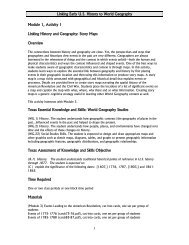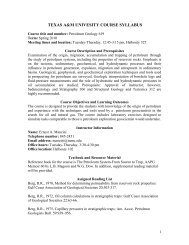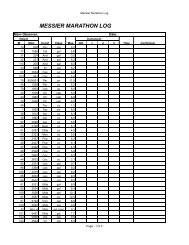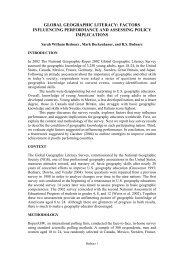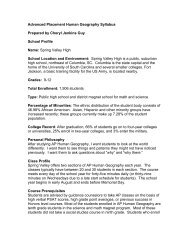Introductory Oceanography (OCNG 251) MidTerm Study Guide: Part 2
Introductory Oceanography (OCNG 251) MidTerm Study Guide: Part 2
Introductory Oceanography (OCNG 251) MidTerm Study Guide: Part 2
Create successful ePaper yourself
Turn your PDF publications into a flip-book with our unique Google optimized e-Paper software.
Deep water formation thus occurs in high latitude regions as presented in Figure 38.<br />
Figure 38. Source of deep‐water formation in dark green with water mass direction of flow.<br />
7) Global ocean circulation<br />
The global ocean circulation is thus a link between surface water loops and deep‐water mass<br />
movements. The overall “conveyor belt” circulation takes a few hundred years (~500 years) but<br />
is not static over time; circulation can accelerate or decelerate depending on climate conditions<br />
and/or water balances. For example the large addition of freshwater to the surface North<br />
Atlantic could decrease the densification of surface water in the North Atlantic and thus slow<br />
down the entire deep‐water circulation, which itself could also alter the speed of surface<br />
returning currents. Hence, the global ocean circulation links all oceans to each other and depends<br />
on atmospheric circulation and wind patterns. The entire structure of earth (sphericity,<br />
seasonality, fluid envelopes in the atmosphere and ocean, rotation of the earth, presence of<br />
continents) affect the redistribution of heat from its zones of surplus (inter‐tropical zones) to its<br />
zones of deficits (high latitudes).



